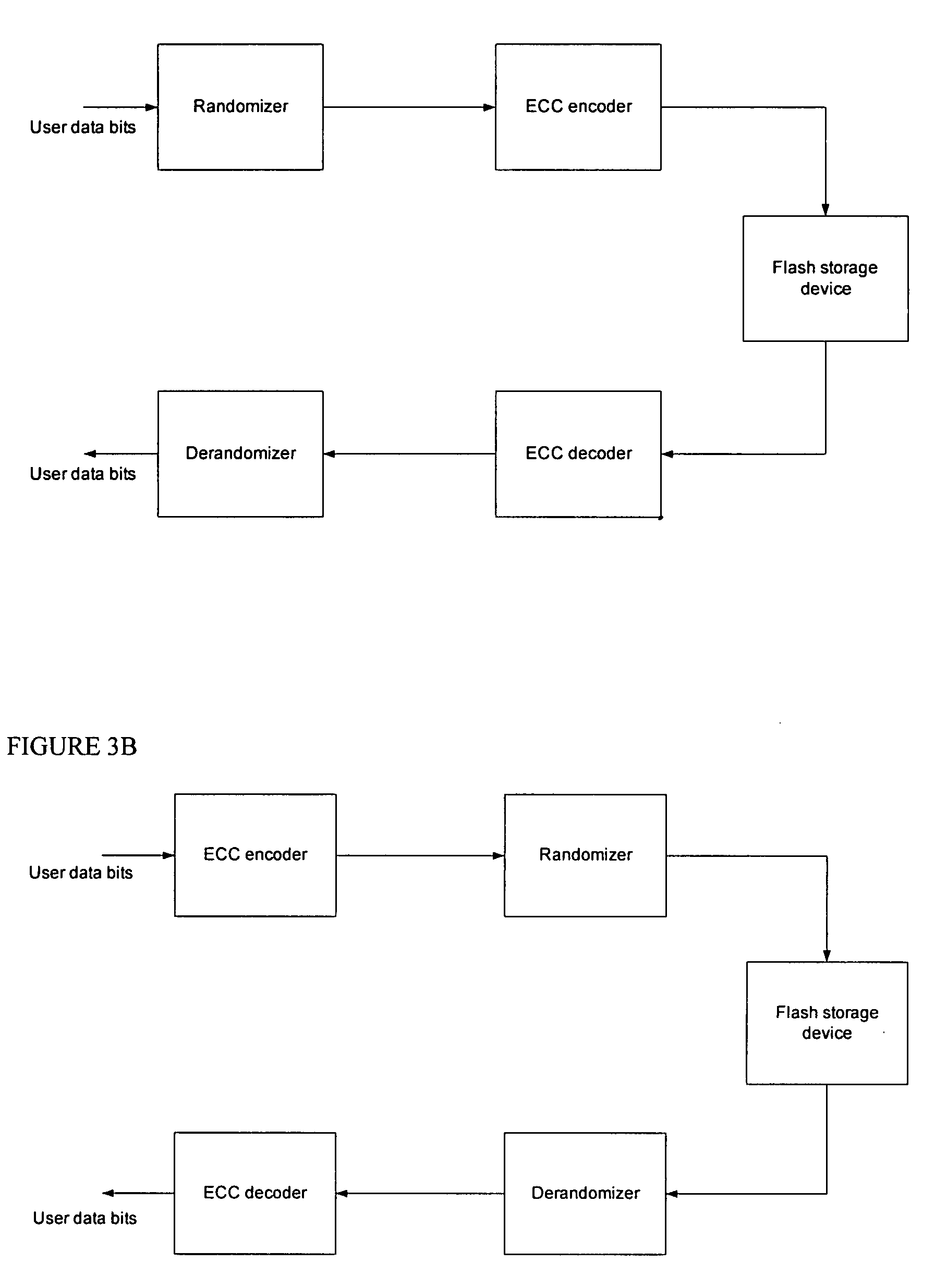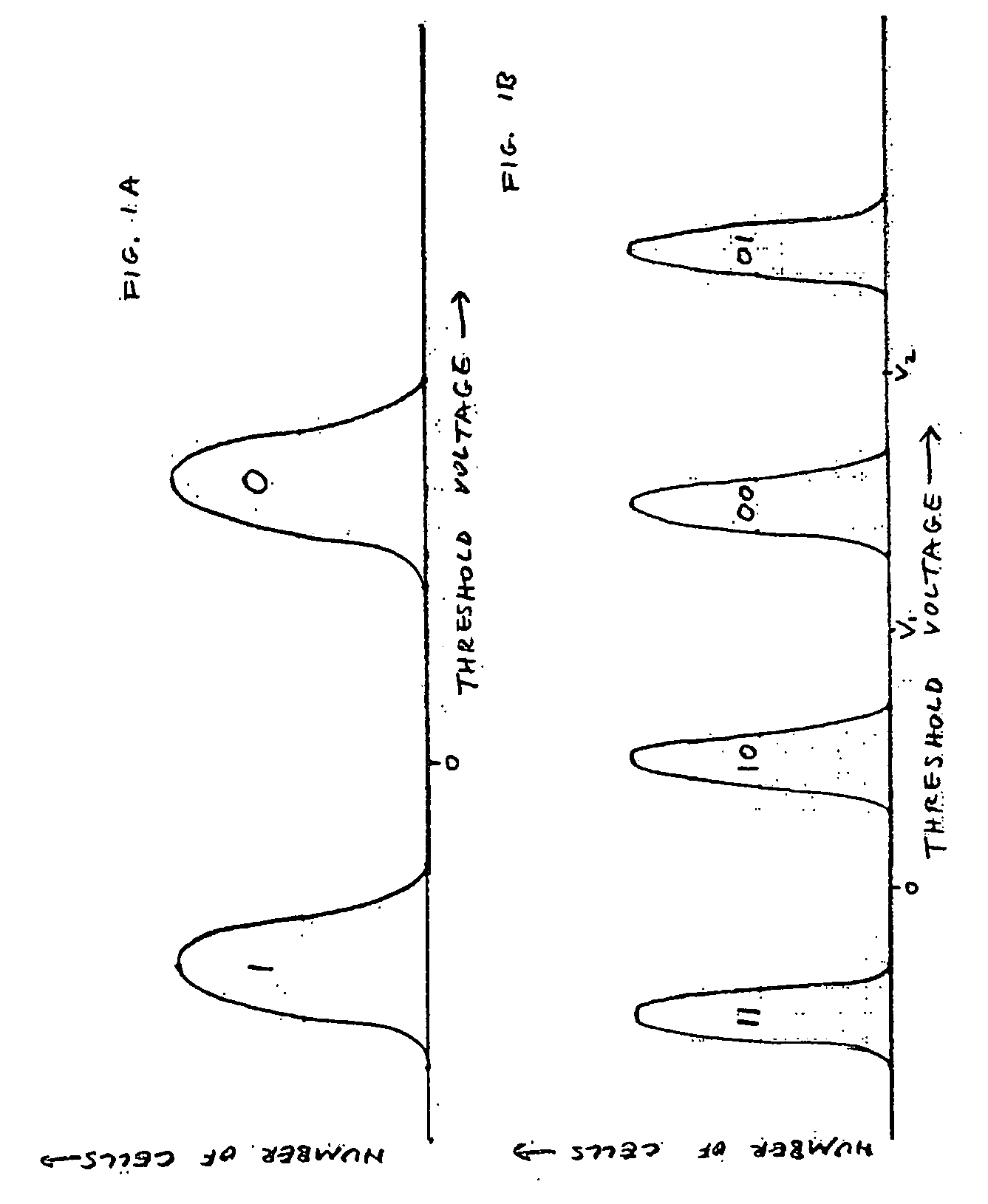Flash memory device and system with randomizing for suppressing errors
a flash memory and randomization technology, applied in the field of flash memory storage systems, can solve the problems of lower reliability of mbc than sbc, lower quality specification of mbc cells in terms of data retention time, and reduce the size of data being compressed
- Summary
- Abstract
- Description
- Claims
- Application Information
AI Technical Summary
Benefits of technology
Problems solved by technology
Method used
Image
Examples
Embodiment Construction
[0062]The device of the present invention is a multi-bit-per-cell flash memory storage device that eliminates or reduces the dependency between the user data stored in the flash and the raw flash error rates (before ECC decoding). This is done by transforming the user data bits into a pseudorandom bit sequence that then is programmed into the flash memory. As a result, the probability of problematic (“worst case”) bit patterns, which cause high block or page error rates, becomes negligible and is practically reduced to zero. The advantages are obvious: 1) the reliability of the flash memory is not driven by certain worst case user data patterns, which are very hard to determine. 2) the reliability of the flash memory in real-life scenarios, in which such worst case user data patters are more frequent, improves 3) the ECC requirements become easier to evaluate. 4) lower ECC redundancy is required and the flash memory cost efficiency (in terms of cells per information bit) improves. T...
PUM
 Login to View More
Login to View More Abstract
Description
Claims
Application Information
 Login to View More
Login to View More - R&D
- Intellectual Property
- Life Sciences
- Materials
- Tech Scout
- Unparalleled Data Quality
- Higher Quality Content
- 60% Fewer Hallucinations
Browse by: Latest US Patents, China's latest patents, Technical Efficacy Thesaurus, Application Domain, Technology Topic, Popular Technical Reports.
© 2025 PatSnap. All rights reserved.Legal|Privacy policy|Modern Slavery Act Transparency Statement|Sitemap|About US| Contact US: help@patsnap.com



